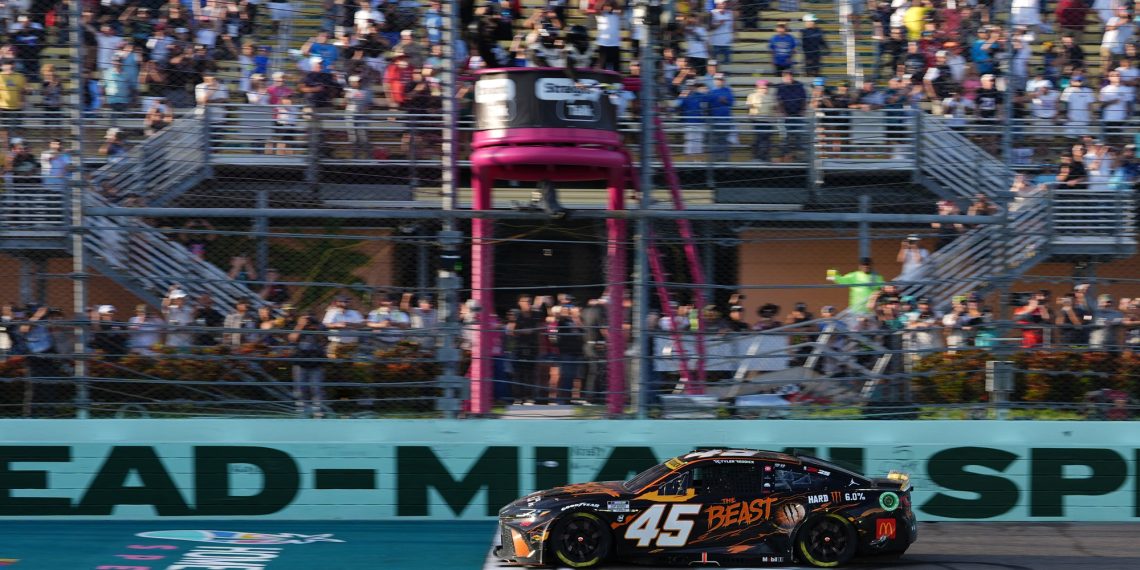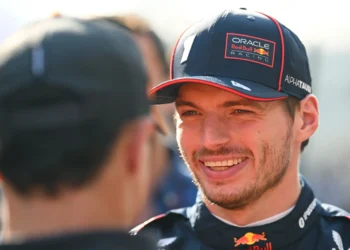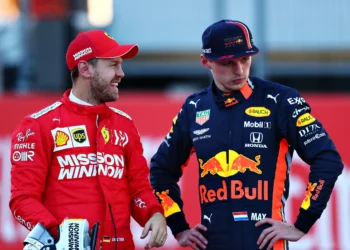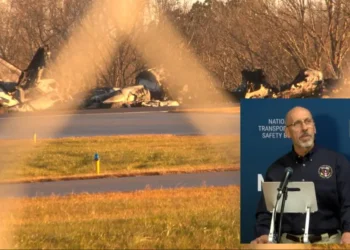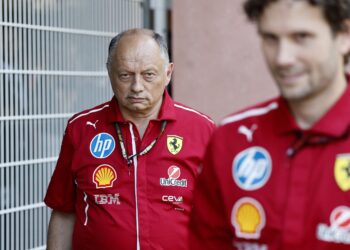The roar of the engines might still echo, but the grandstands tell a different story—one of a fading empire. NASCAR, once the undisputed king of American motorsports, is now struggling to convince fans that the magic is still alive. And if you ask former driver Jeremy Mayfield, the sport is doing everything it can to manufacture an illusion of packed venues.
“The seats are literally colored in a way now to where it looks like there’s people,” Mayfield said, taking a sharp dig at NASCAR’s desperate attempts to hide declining attendance numbers. It’s a damning statement that reflects an undeniable reality: NASCAR’s grip on the hearts of American fans isn’t what it used to be.
The great decline – from 200,000 screaming fans to a vanishing crowd
There was a time when the Daytona 500 was a religious experience for racing fans. The energy, the passion, the sheer spectacle—it was something you had to witness in person. In 2005, up to 200,000 fans packed the stands for “The Great American Race.” But fast-forward to today, and that number has shrunk to around 150,000—a gut-wrenching decline for a sport built on the loyalty of its die-hard fanbase.
Even NASCAR veterans can’t ignore what’s happening. Racing legend Kenny Wallace broke his silence on the matter, making a bold admission on his show:
“Let’s face it, we’ve already admitted it. NASCAR is never ever gonna be back to its glory days.”
Let that sink in. A veteran of the sport, someone who lived through its peak, is outright saying NASCAR’s golden age is over.
Where did all the fans go?
NASCAR’s problem isn’t just about empty seats—it’s about a generational disconnect. The days of Richard Petty, Dale Earnhardt, and Dale Jr. had a rawness that modern NASCAR seems to have lost. The sport has pivoted to newer, younger audiences at the cost of alienating its core, loyal fanbase.
Wallace doubled down on this reality:
“They took out all the grandstands, realizing that the sport was a rare time in life, and we’ll never see it again.”
This isn’t just nostalgia talking—it’s hard facts. Major races like Richmond, Bristol, and Indianapolis once boasted jaw-dropping crowds. Richmond alone saw 103,000 fans in 1998, but today, only a fraction of that shows up.
Even Las Vegas and Pocono, once electrifying venues, have become shadows of their former selves. The demand for NASCAR isn’t dead, but the fire that once made fans camp outside tracks overnight? That’s flickering fast.
TV ratings vs. reality – is NASCAR just a streaming sport now?
Here’s the twist: NASCAR’s broadcasting numbers are still solid. The online viewership remains respectable, proving that people still care—just not enough to fill the stands anymore.
So what’s the long-term play here? Is NASCAR willing to sacrifice the in-person experience to become a TV-first sport? If so, how much further can it go before it loses the essence of what made it a phenomenon in the first place?
Daytona 500 – the last stand?
If there’s one race that still holds its mystique, it’s the Daytona 500. Despite the decline everywhere else, this event continues to attract attention like no other. But the real question is: Will Daytona 500 attendance numbers hold strong, or will this too be another painful reminder of NASCAR’s lost golden era?
One thing is clear—the days of 200,000+ fans shaking the grandstands are long gone. The sport must now face the reality that nostalgia alone won’t keep it alive. The next race at Daytona might just be the ultimate test for NASCAR’s future.

